I accidentally stumbled into a trove of old photos of downtown Iowa City, most of them from the years 1970-1976, which perfectly match the years I lived there a second time as a very carefree young guy. Most are from a collection at the Iowa City Public Library and were made to document the rather extensive urban renewal project that was then just getting under way, and which involved tearing down many blocks of old buildings and houses. I watched all of this happen in real time, and a number of favorite haunts of mine went the way of the wrecking ball.
This is a block of Dubuque Street in the heart of downtown, and this block was one of a few that was spared and still exists. As to the cars, I rather doubt it, although a lot of Mustangs did survive. A ’69 Impala convertible? Maybe. An AMC Matador wagon? Not so likely.
This is the next block east on Dubuque Street, something of the main street in town. The Hotel Jefferson, long the tallest building in town, is seen in both shots. It had been taken over by the University of Iowa by then as an office building. It’s a bit hard to make out, but a few doors this way is the Best Steak House, where I got my first job after returning to IC in February of 1971. And that green Plymouth Fury coupe in the foreground will be seen at least one more time.
Here’s a better shot of the Best Steak House. The Filet Mignon meal was $2.09, as I remember all too well. It was owned by a Greek guy and everyone who worked there except for me were all Greeks. This half block would soon be gone, but the Best Steak House relocated to larger digs a block away.
Back in the early ’70s, the parking lot at Penney’s, then the only “modern” store in downtown, having replaced an older building some years earlier. Another old building is in the process of coming down to the right. You will note a nice mixture of cars, as the locals still favored big American sleds but folks connected to the university were very much early import adopters. There’s a red Datsun 610 coupe three cars past the tired ’60 Ford.
This old building coming down was not technically a part of the city urban renewal project, but the University’s ongoing expansion. In this case it was the East Hall. A Corolla and an early Capri share the scene with a Toronado and a ’67 Ford Galaxie 500.
Here’s another shot of that, with different cars, including an Olds Cutlass coupe and a big Buick coupe.
And one more of East Hall, this time with a Datsun 1200 coupe and a Volvo 122 along with a complement of American iron.
East Clinton Street. The block on the left edge is already empty, and that building on the far right corner, the former Odd Fellows Lodge, is one of the next to go. A VW cabriolet is behind a Datsun 240Z. Parked on the right is ’69 or ’70 Ford Ranch Wagon, a Vega, Datsun 510, ’68 Chevy, and a similar vintage Dart. A ’69 or ’70 Montego si across the street in front of a “bumpside” Ford pickup, likely an F100 4×4. Further back is a post-’68 orange VW Beetle, but I’m struggling a bit with the low, swoopy car behind it. An Opel GT is my best guess.
This older picture of it slipped in somehow. There’s a Renault Dauphine in front of that ’64 Dodge. And a ’61 Plymouth is on the right.
And one more shot of it, this time with a ’63 Rambler Classic between the Torino and ’68 LTD. That Pittsburg Paint and Glass store is where I would buy materials when I picked up a painting odd-job. I remember an old guy wanted just one side of his old 2-story house painted. After I did it, he then wanted another side. Eventually it was all the sides. I would have charged him less for the whole house upfront.
There it goes…behind a ’68 Torino Squire wagon.
Here’s the Burger Chef…before. I ate there a few times, but it wasn’t my favorite burger place. Another post-’68 beetle and ’69 or ’70 Mercury.
And in the process of coming down..
The Southwest corner of College and Clinton Streets. A tire store, and the offices for the concrete company. The reality is that although urban renewal was painful, ugly and partly perhaps unnecessary, these kinds of business and many others were either failing or moving to new larger facilities outside of the downtown area.
There’s a ’71 0r ’72 Pinto followed by a ’70 Impala, a ’62 Bel Air a ’66 or so Falcon 2-door and a Vega. On the near side is a Volvo 122 and a Maverick.
East College Street, 200-Block. Lots of cars here, including a gen1 Monte Carlo, a Vega hatchback, a ’68 or so Falcon, a ’71 or ’72 Beetle, a ’68 or ’69 Beetle, and a Buick? In the street is a rather unusual Ranchero with a roof rack on the cab. That’s a first. Parked on the other side is a ’69 Fury that could well be the one I drove to the Rockies with two friends on a memorable trip in the summer of 1972. Behind it is a ’70 Chevelle Malibu coupe, a ’72 Torino wagon, a ’69? Olds 88, a ’70 Dodge Polara, a ’69 Impala and a ’73 or so Chevy K5 Blazer.
South Clinton St. 100 Block: Not a lot of car spotting, but that closer Schlitz sign is for the Vine, a favorite watering hole, thanks to a fake ID. The memories made there…That whole block went down, and is now home of the Old Capitol Mall. Looks like a ’69 Pontiac Catalina with its trunk open.
100 Block S. Clinton St, circa 1966. A 1960 Imperial leads the parade of parked cars, followed by a ’64 Galaxie 500 sedan, a ’65 Impala and a ’64 Plymouth.
100 Block So. Clinton St (other side) circa 1966: A ’56 Chevy wagon in the street next to a Rambler, and parked on the far side are a ’64 Impala sedan, a ’63 Catalina, a ’64 Ford Custom, a ’64? Olds with what looks like another right on its tail, and a ’64 Dodge 880 in the rear.
South Clinton St, 000 Block: A store being rebuilt after a fire. The Airliner to the right was a long-time popular bar with the University athletic crowd. There’s a Triumph GT-6 in front of an extended-body Econoline.
Iowa Avenue, looking East: This photo shows the old COD Steam Laundry building, which was the site of the first Iowa City Public Library– housed on the second floor. By this time, the COD Steam Laundry was now a favorite bar and music/dance venue, thanks to its large old wooden floor. This is where I met Kim, the girl that had the Buick Wildcat I wrote about. A young woman I knew ran a little deli in the front at lunchtime.
Although a large number of old brick and wooden buildings were torn down, some of the old houses in the urban renewal district were moved. Here’s a group of three or so coming down Dubuque Street. I actually met the guy who was doing this, at a party at one of his moved houses that he rented out. I was quite intrigued by that, and I ended up doing essentially the same thing some 25 years later in Eugene, moving houses the University of Oregon was going to otherwise tear down. It’s funny how certain concepts resonate and stick with one.
Here they are rolling by with the old Capitol in the background. Iowa City had been selected as the territorial capital in 1839, but it did not officially become the capital city until 1841; after construction on the capitol building had begun. The capitol building was completed in 1842, and the last four territorial legislatures and the first six Iowa General Assemblies met there until 1857, when the state capital was moved to Des Moines. It then became the center of the fledgling University of Iowa campus. The University had been founded in 1847.
The traffic policeman is riding a Harley Davidson trike, which once very common for these kinds of applications.
The second house, which is listing a bit precariously, is being hauled by a compact Mack MB model, produced between 1963 and 1978. The house behind is being pulled by a 1950s GMC HD truck.
These houses were coming from an area to the south of downtown, where several blocks of them were torn down. I had a friend who lived in one of them and was moving to Vermont, in part because he had been given a final move out date and a few months’ rent for the trouble. But the house hadn’t been totally shut down, one tenant in an upstairs apartment was still there. So I moved into his apartment and lived there, rent free! Until a about two months later two guys from the city knocking sharply on the door woke me up one morning. They were not amused. And they gave me until 5PM to be out.
East Washington Street, 200 block: My last GF in Iowa City, the one I moved to California with, lived with a roommate in an apartment above the Englert Theater. In that apartment was a heavy fire-proof door that opened directly unto the balcony of the movie theater. Needless to say, we availed ourselves of that amenity on a number occasions. We’d open the door carefully to make sure nobody was sitting in the back rows of it. Hardly anyone ever sat in the balcony, so we got away with it.
Is that the same green Fury fuselage coupe we saw earlier?
Corner of South Clinton and Washington Streets: That could well be me driving that Iowa City Transit bus. I drove for them in my last year in Iowa City, from the fall of 1975 to the late summer of ’76, when I escaped to San Diego. This is where all the buses converged every half hour, on both sides of both of these streets, which formed the corner of the University Pentacrest (on the left). The original fleet bought in 1971 consisted of 12 GM T6H4521A buses (6V-71 powered), including these two seen here. There were also two new GM T8H5307A buses (8v-71 powered), bought just shortly before I joined them.
East College Street, 100 block: We wore shoes from Kinney Shoes, back when we were there as kids. And I had a friend that lived in an apartment above Osco Drug. There’s a 1970 Chevy parked at the snowy curb.
This is an older shot, from 1963, when Bremer’s Clothing store, the biggest of its kind in Iowa City, had a fire. I had a bit of a run-in at Bremers. After I first arrived back in Iowa City, in February of 1971, I was broke and homeless, sleeping in a dirt floor basement. I really needed a pair of socks, so I shoplifted one pair of basic men’s white cotton socks from Bremers. As I walked out the door, a young kid/security officer grabbed me by the shoulder. I should have pulled away and run, but my Catholic upbringing kicked in.
They called the police, who put me in a cell overnight before going in front of a judge the next morning. He charged me a $35 fine (about $3500 in today’s money). I had to call my brother back in Towson to sell my beloved stereo amplifier in order to raise the money.
Can you imagine the same thing happening today? Over a pair of socks? Times have changed. Folks wheel out carts full of expensive tools at HD and the employees are not allowed to do anything.
I’m not saying I wasn’t wrong, but nowadays homeless persons can pickup all the basic living essentials, clothing, tents, sleeping bags and food readily at various non-profits, food pantries and such. Not so back then. It was a lot harsher, and I was hungry almost all the time. Jobs were not easy to get, they wouldn’t give you food stamps unless you could prove you had a home with a full kitchen (or access to one). I was very glad to get the job as busboy/dishwasher at the Best Steak House, where I could eat free too.
Corner of E. Washington and Dubuque Streets: One of the main banks in town. And a ’66 LTD followed by a ’67 Cadillac 4-door hardtop.
Corner of Dubuque and Washington Streets: A freshly cleared building. And a slew of cars, including what looks to be a ’73 Caprice driver’s ed car on the left. That’s a pretty nice car for that purpose.
Here’s the same corner after it was turned into a little park. That’s a nice early Chevy van, owned by Northwestern Bell.
This fire happened in 1970 not long before I returned to IC, in the building that housed Things, Things, and Things, something of a head shop, a significant counter-cultural institution.
By the time I did return in 1971, it had been totally rebuilt, in a very modern and much larger incarnation. The external steel was COR-TEN, which rusted intentionally on the surface. It was a very hip department store, with clothes, kitchen ware, some furnishings, indoor plants, and a very chic little deli/cafe in the basement. It was the cool place to be and be seen; there was nothing remotely like it in Iowa at the time. A little taste of San Francisco or New York. The owner drove a vintage BMW motorcycle with a sidecar where his chic wife sat, and dressed accordingly, with a leather helmet and long scarf that trailed behind him.
The 000 Block of East Washington: Another building bites the dust. I knew the folks that owned the Bivouac, an Army surplus store that was transitioning to sporting goods.
In order to make room for some of these businesses that were displaced, a temporary mall was created in the 100 Block of S. Clinton street, right in the middle of the street. Here some prefab building units are being craned into place. There’s two Jeep Dispatchers photobombing; one from the USPS and the other a city police unit. Presumably this is what they replaced the old HD trikes with.
This is where the Bivouac was relocated to. In a curious coincidence, I was walking along the sidewalk when this was being built, and who did I see nailing decking boards to the walkways between these unit? Mr. Yoder, the Mennonite farmer I used to stay with in the summers when we lived here in 1960-1965. He struggled to make a living off the farm so he would pick up other work, especially in the winter.
How I used to while away the hours in Epstein’s Book Store. I vividly remember perusing the new book “The Joy of Sex” in considerable detail.
Before we go on, let’s briefly look at Iowa City’s urban renewal project, which was first laid out in 1966, with the areas affected shown on this aerial map. As mentioned earlier, not everything in this area was torn down; a few key central blocks of the most vibrant part of downtown were left, all or in part.
How downtown looked in the 1920s. This must be from before 1926, when they added two stories to the Hotel Jefferson. The 1920s were something of a peak time for many towns, before the Depression and then the postwar expansion outwards, which of course is what weakened the downtowns. That’s what urban renewal was supposed to fix, but it took decades longer than anyone expected.
This aerial phot from 1977, when demolition was finished, shows the many empty blocks. The Jefferson Hotel building, is the tall red brick building a bit right of center. A few blocks to the right are mostly University-owned blocks, so the affected area was mostly to the south.
Another demolition site.
Folks setting up something of a playground for the kids on the bare lots.
But it did eventually happen; Iowa City has a vibrant downtown again, with many new developments, student housing, conference facilities, retail and more. This aerial is from 2019.
This large development, Hieronymus Square, is from 2010. Perhaps the demolition process might have been spread out, over the decades, and developers would have just bought the land and torn down the old buildings when they were ready to put up new ones? Change is an inevitability, Iowa City has had a strong economy for many decades, but making much of the core look like Dresden after WW2 seems a bit harsh.
Let’s get back to a few more street scenes and cars. This is from an unidentified alley, and a fine ’62 Olds Starfire coupe.
Another favorite haunt of mine that got torn down. The hamburgers were made from fresh hamburger, rolled into a ball, plopped on the greasy grill and squashed down with a big long spatula. The ultimate greasy spoon.
I found another source of lots of Iowa City history, a Flickr page titled “Then and Now – Iowa City. Here’s a fine nighttime winter shot with a ’67 Malibu convertible.
This is how I remember it from our first stint in Iowa City; this shot is from 1963. It was hard to imagine then that much of this would be demolished, especially coming from Austria where that doesn’t happen very often.
Little did I know then that 10 years later I would be shacking up with a 6′ tall red-haired woman named Frank in an upstairs apartment in that building behind the tree.
There’s a number of twinned images there, of the old and the new. In this case the, what used to be the main hardware store in town.
It looks pretty shabby, but the Capitol was a movie theater. it later got a bit of a makeover and a marquis, but it was always the seediest theater in town.
This is one of my childhood haunts, the Lincoln-Mercury-Comet dealer. And it was directly across the street from the Ford dealer. Maybe co-owned?
Two C2 Corvettes parked together. I’m sorry I missed that. I’d have been all over (and under) them.
And here’s the Standard station on Dubuque street that my father always patronized. My first exposure to Paul Bunyon Muffler Man.
Slick House! I lived there once. This beautiful old house overlooking the Iowa River on Clinton Street was across the street from the university president’s mansion, and by this time was a rooming house for a rather disreputable bunch of…eccentrics, crackpots, poets, bikers, hippies and me (and my brother, who joined me here for a few months). We rented and shared that big bedroom on the upper floor on the right. Oh the stories I could tell. For some reason, it was all men, as far as I can remember. Well, no woman in her right mind would want to live there…the shared bathroom! The shared kitchen! Beyond gross. Iowa City’s Animal House, with two Niedermeyers in residence.
The street here ends on the left of the picture, and one has to make the turn. This is exactly the location where a few years later I went into a wild slide in the 40′ transit bus I was driving on a frosty early morning, as I floored the throttle as I hit the brick pavement, which were covered in a very fine layer of ice or frost. Yippie! Fortunately no parked cars were wiped out and I had no passengers on that first 6:15 run in the morning.
I saved the best for last:
When I came across this then and now shot of a snack bar at that Flickr page, I almost fell out of my chair. That’s our Fairlane! And that’s…us! I’m at the window, ordering a strawberry milkshake, hopefully. WTF! What are the odds?
But then I remembered that photo, it’s from our family collection of old snapshots. So how did it get on this Flickr page?
Oh right; I used it once in a CC post. I couldn’t remember which one so I Googled “Iowa City Dairy Sweet” and it came up. I used it way back in 2013 to announce our first CC Meet-Up, which was to be in…Iowa City.
That was a fun get-together; just a few of us: Jim Cavanaugh, Jason Shafer, Tom Klockau, Ed Stembridge, and? I think that was it. But why don’t I have any pictures of it? Hmm…I think I had just got my first smart phone and bungled it up.
Let’s wrap this up with a Then, Then & Now shot – the same location over the years. In the top undated photo a trolley car is turning left (toward the east) from Capitol Street onto College Street, at the Dunkel Hotel. In the middle photograph demolition has begun to clear the way for the future Old Capitol mall, seen in the “Now” photo at bottom.
Here’s the links to those two sites with gobs more pictures:
Iowa City Public Library Collection: Urban Renewal
Related CC reading:
Auto-Biography: 1969 Plymouth Fury – Somewhere East of Laramie
Auto-Biography: Moving On, To Moving Houses
Auto-Biography: Bus We Must – My Short Career With Iowa City Transit
Auto-Biography: The Hitchhiker’s Guide To The Galaxie 500 And Other Rides



























































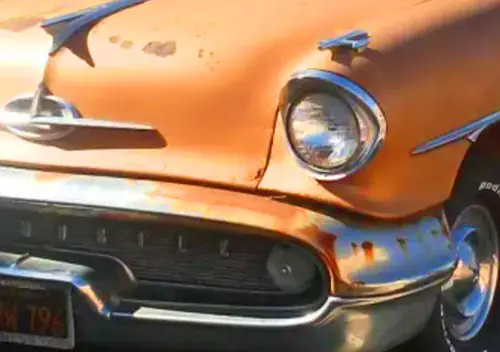
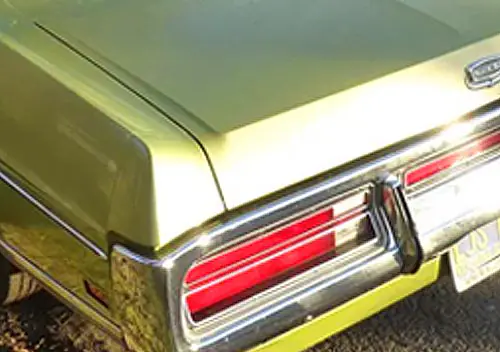
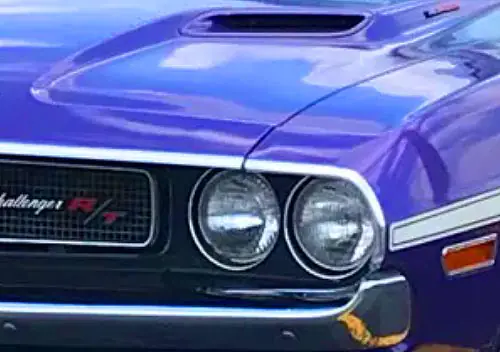


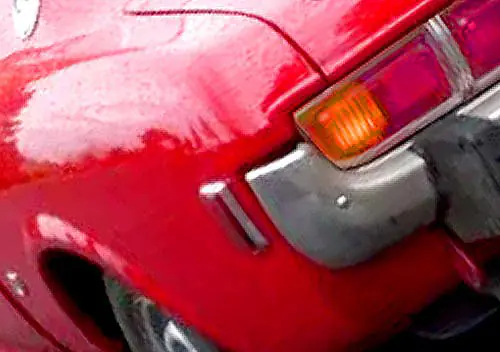

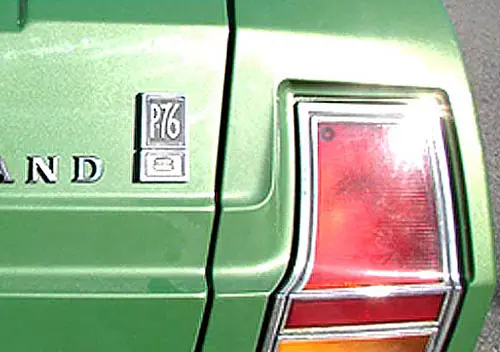
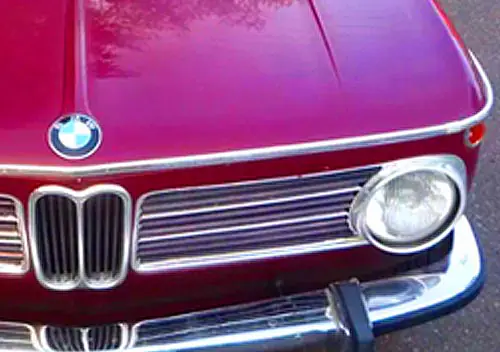

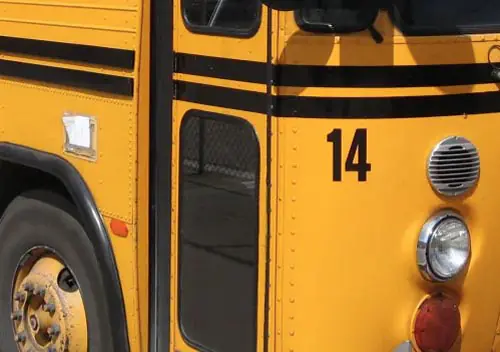
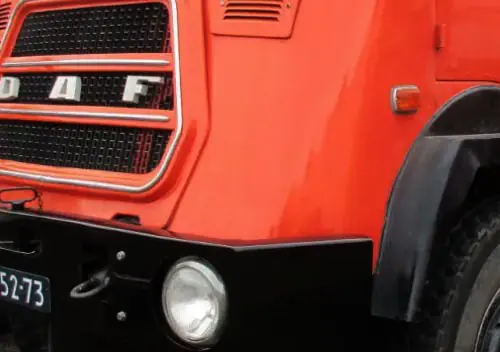
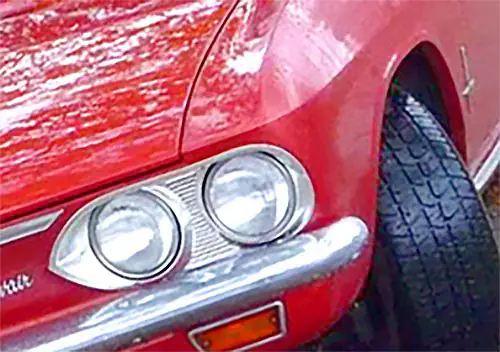
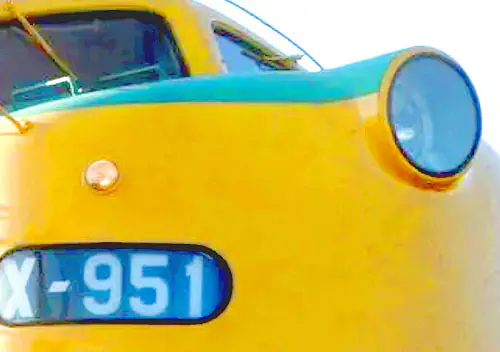
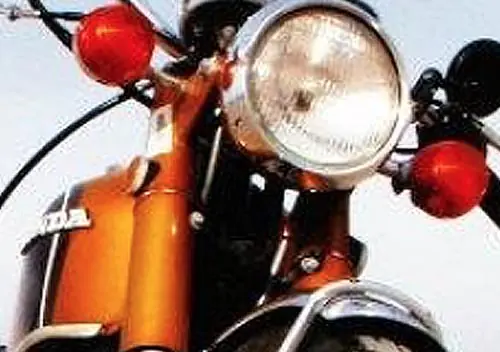
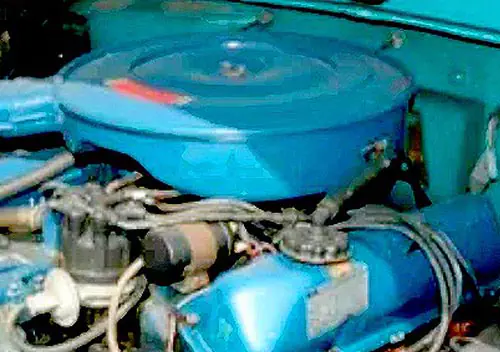
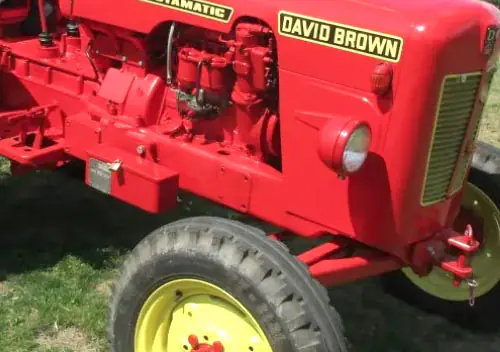
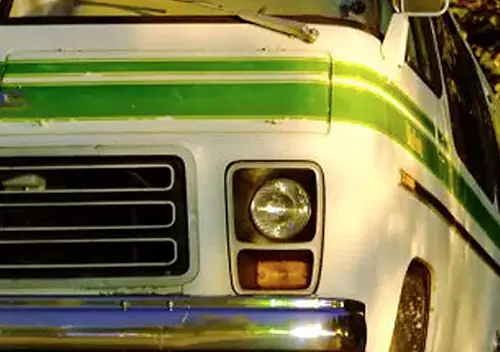

I remember the meet up, and have this shot. I remember that the following day was Mother’s Day, so Marianne and I stopped at a Sam’s Club on the trip home to buy some flowers for her mother – and captured the Lamborghini Espada in the parking lot, which is in the CC archives!
I love all of the views of old Iowa City.
Ah yes! Thanks. Good memories.
I assume East Hall was a building on the University campus from earlier days of the University. UC Berkeley happens to have a South Hall from it’s early days along with a North Hall. North Hall long gone but South Hall still standing, in the middle of campus, since being built in 1873. Shot Kodak Vericolor last month.
Great pics! Reminds me of some of the bustling cores of small towns in Central and Eastern Canada at the time. Many of these mom and pop main street small businesses, were not able to compete with the suburban Walmarts. Devastating many of these downtowns. It took another ten to twenty years, as similar events happened in Canada.
Seeing the damage done in the US, various Canadian towns tried to protect themselves from Walmart, taking over the retail business in their communities. But they could not manage it legally, against such a powerful corporation. Walmart would often offer extended weeknight hours to 10 or 11pm. Mom and pop businesses, simply could not afford to compete. Town officials had years to come up with strategies, that ultimately proved fruitless.
Town lawyers attempted to require local businesses close at 6:00 or 7:00pm, Monday through Thursday nights. Walmart’s corporate legal team, would challenge the town council and lawyer(s), and consistently win.
Thousands of local small businesses were put out of business. Walmart created some jobs, but much of the profits left the communities. And the country.
Iowa city loves this post. I copied to a local Facebook group
Many small businesses went out of business during the pandemic. As Walmart was thriving.
Essentially, a tremendous wealth transfer upwards.
That’s no doubt an Opel GT, in that eighth photograph
There is a small town here in Eastern Ontario, that reminds me very much of the old downtown of Iowa City. The downtown of Perth, Ontario was chosen in 1979, by Heritage Canada, as worthy of historical preservation. Starting in 1980, a multi-million dollar effort was made, to restore and preserve the architecture of downtown Perth. And throughout the town. Today, you can see tremendous pride in the community.
Using Google maps, you can see how pretty the town is. If only urban planners across North America, had the foresight to preserve these towns, cities, and buildings. Perth has a bustling tourism business. That took over, as the manufacturing base in Perth, was damaged due to NAFTA, and jobs lost in the 1980’s.
Perth was able to save its downtown, dating to the early 1800’s.
https://www.google.com/maps/@44.9000103,-76.2495707,3a,75y,111.64h,75.57t/data=!3m8!1e1!3m6!1s_9eHVB_ZWmeo7cAynMhuDA!2e0!5s20230801T000000!6shttps:%2F%2Fstreetviewpixels-pa.googleapis.com%2Fv1%2Fthumbnail%3Fcb_client%3Dmaps_sv.tactile%26w%3D900%26h%3D600%26pitch%3D14.425320648991175%26panoid%3D_9eHVB_ZWmeo7cAynMhuDA%26yaw%3D111.64226719929164!7i16384!8i8192!5m1!1e2?authuser=0&entry=ttu&g_ep=EgoyMDI1MDUyOC4wIKXMDSoASAFQAw%3D%3D
Not nearly as fancy of course, as the former Odd Fellows Lodge. But the similar-looking Red Fox Tavern, is still going strong. Must be over 150 years old. It has been the Red Fox Tavern, since at least the early 1970’s, to my knowledge. Perhaps the ’50’s or ’60’s, or sooner.
The Paul Bunion at the gas station is actually the Midas Muffler man. A large fiberglass figure that used to stand in from of Midas Muffler shops. As time progressed, others would buy the figure and put him in front of their business.
He even has his own Wikipedia web page:
https://en.wikipedia.org/wiki/Muffler_man
And a list of locations:
https://en.wikipedia.org/wiki/List_of_muffler_men
Worthy of a CC story
Maybe I’ll eventually create a CC-specific post about Muffler Man and his kin (there are many sites out on the Web already about this). I have occasionally referenced him (and sometimes her) in comments and other posts.
What intrigues me about this photo that Paul found of Muffler Man in his Paul Bunyon costume is that it’s clearly from some time in the early 1960s, and Muffler-Paul has already been repurposed into something other than his original function. A classic Paul Bunyon figure would have come from International Fiberglass holding an axe (whereas Muffler Man would have a muffler in his mitts). But here he’s already holding a tire and what may be a oil-change size can of oil.
Here’s Muffler Man that I shot earlier this Spring (2025) in Hatch, New Mexico. He’s holding a miniature Breaking Bad Winnebago…and is likely very much for sale should anyone be interested.
Sorry, he’s kind of shy. Let’s try again.
He looks a bit like former NHL hockey player, Eric Lindros. lol
The Muffler man in my home town:
https://www.roadsideamerica.com/story/11780
I always appreciate a post that opens with a Matador shot, but that was a great set of photos. Iowa City had some great buildings, and still has a couple.
Boo to the way urban renewal was done on such a scale. My city lost oodles of heritage buildings, and it continues today. This block of 1800’s buildings was intentionally demolished by neglect, despite a heritage designation and city orders to repair.
https://www.cbc.ca/news/canada/hamilton/gore-park-building-collapse-1.7385761
Iowa City: another victim of the “Hmmm, we have some charming, irreplaceable Victorian architecture here, some of it a little rundown. Let’s level everything, dislocate established businesses and residents, and replace it with mediocre modern stuff. The Feds will give us money and we’ll say we’re doing it ‘for the public good'” line of thinking. smh.
I was wondering if there was anything Victorian left in Iowa City, and I found these two beautiful houses–so all was not lost:
Iowa City wasn’t the only victim, the Van Horne House in Montreal was demolished and replaced by some mediocre modern stuff.
https://blog.heritagemontreal.org/en/50-ans-de-la-demolition-de-la-maison-van-horne-mesurer-les-progres-et-les-defis-du-patrimoine-de-la-metropole/
Old towns can be either revitalized, updated, and sometimes even rebuilt or just continue with often outdated and expensive to maintain buildings that are functionally obsolete and not really fit for purpose. If changes are not made (as the text explained here), businesses (and residents) move to more desirable or functional or cheaper locations often outside of the city center, shoppers follow, and the downtown ends up a blighted mess with vacancies, vagrancy, and decay, witness any number of towns and cities across America. The “after” photos, while perhaps not to everyone’s aesthetic tastes (aesthetic tastes are like opinions…), likely do appeal to plenty of people and keep them coming to the downtown core, which is the whole idea. Not everyone wants to live their life in a timewarp, those that do notably only very rarely are offering to pay to keep it that way. And why stop at the lovely Victorians, what was wrong with the interesting mud and straw structures or even more relevantly, the wigwams of the Ioway Tribe as well as the Meskwaki Nation that likely once dotted the area that is now Iowa City? How did those people feel about the Victorians that ended up on their land?
I was wondering if there was anything Victorian left in Iowa City, and I found these two beautiful houses–so all was not lost:
Actually very few genuine Victorian houses were affected, as they were/are almost all outside the urban renewal zone. There’s a good number of historic houses preserved, the oldest ones being before the Victorian architectural period.
As to what was taken down, it was mostly lower grade commercial and light industrial brick buildings that had been thrown up quickly and cheaply during previous boom period (1880s mostly). Most of them were every basic and of course extremely obsolete in terms of use of the space, amenities, utilities, energy efficiency, etc. And there were a few blocks of older houses that were either moved or torn down; many were moved.
Each city has its own history, quality of architecture, and growth trajectory. Although it seems to me that the tear down process was a bit hasty, I’m quite convinced it would have happened anyway. As I stated, IC has had a very dynamic economy, so downtown really needed to change to adapt to the vastly different needs. It was essentially inevitable. It could have been done differently, with some more of the nicer central buildings kept and repurposed, but once outside the heart of the urban core, the buildings were pretty shabby, modest and put up haphazardly and would have not made sense to preserve or re-purpose. This was not a prosperous East Coast city in the 1800s, more of a frontier town initially.
But yes, this is inherently a controversial subject. And it did displace a lot of folks then living in cheap apartments on the 2nd and 3rd floors as well as some marginal businesses. Downtown lost the bohemian/artsy/hippie feel it had.in the late ’60s and early ’70s. Maybe that was the point of the exercise?
My “That’s us!” moment occurred in 1986 when I bought a copy of “New Jersey Outdoors” magazine. Flipping through, I suddenly see me, my brother, and my dad watching a blacksmith demonstration at Fosterfields, the “living historical farm”. (I’m on the extreme left). I had no idea this picture was taken, and if I hadn’t bought the magazine, I would have never known. Funny how things like that happen.
That 1977 aerial view, ouch. I have to wonder how long some of those ex-blocks were parking craters before something got built on them again, and how healthy that mall is now. Here in Burlington VT the 1970s downtown urban renewal mall is mostly knocked down, to be replaced by urban blocks with ground floor retail space and apartments above, and reconnecting the two streets that the 70s project split. That’s been delayed almost a decade because the original developer ran out of money due in part to challenges by NIMBYs using the very laws put in place as a reaction to…1960s/70s urban renewal.
Paul, thanks for the photos!! This is very different from the Iowa City I grew up in (90’s and 00’s).
Most of the houses where I live have basements. Would it be possible to move them on a truck given that the lowest 5 feet or so are underground and would require excavation? Or can the above-ground floors be separated and lifted off the basement and moved?
My area had several failed “urban renewal” projects. In the southwest quadrant of DC, commercial real estate developers would buy whole blocks or half-blocks, tear down everything on it, and build “office cubes” (limited to about 11 stories tall due to DC laws). The developers emphasized that the lowest, ground level would still be for retail and small businesses, but invariably distinct local stores and eateries were replaced by a bank, CVS, Starbucks, a fast-food franchise, and other places that could be found anywhere. Due to the popping of a real-estate bubble, many of these evacuated old buildings sat vacant for over a decade, becoming eyesores and at least one collapsing.
Nearby Rockville, MD was subject to a failed urban renewal project in the 1960s that resulted in most of the downtown business district (which dated from the late 1900s) being gutted in favor of Rockville Mall and some office towers. Due to the bureaucracy involve with obtaining federal urban-renewal grants, before the mall could be built, other nearby areas opened privately-funded shopping centers and malls and many stores didn’t need another nearby location in Rockville Mall. The mall was also in a hard-to-access, slow-traffic area. As a result, the mall opened in 1972 with only one anchor, a Lansburgh’s department store, and that entire chain went bankrupt and closed a year later. The space was eventually filled by a Sloane surplus furniture clearance center, hardly what a mall wants as an anchor. The mall closed in 1981, just nine years after it opened, half vacant for most of its short existence. One section of the mall, across the street from a new Metrorail station, did reopen a few years later, but only the cinema, a billiards place, and a few restaurants did well. Meanwhile, the closed-off roads made the area’s traffic problems even worse. Most of the remaining section of the mall again was vacant and was finally demolished in 1995, and some of the roads blocked off by it were later reopened.
Would it be possible to move them on a truck given that the lowest 5 feet or so are underground and would require excavation? Or can the above-ground floors be separated and lifted off the basement and moved?
Absolutely. These moved houses all had basements. A wood framed house literally sits on a basement no differently than on a crawl space foundation; the basement just goes down further.
Holes are knocked into the basement or crawl space walls just below the wood sills of the house and then long steel I beams are inserted so the house floor joists rest on the two I beams. Then the I beams are raised with jacks, and the presto, the house is in the air.
Folks have been moving houses, even large brick buildings, for centuries.
That yuca-tan Matador is a near doppelganger of the one my parents had and for a second I thought someone caught the shot during one of our visits to my grandparents place. Then I noticed that it isn’t a ’72 and ours sadly didn’t have the 401. My dad was born in Iowa City and later came back to go to U of I. Thanks for the memories. Go Hawkeyes!
Not every city had a college looking for space after Urban Renewal tore down the old buildings. My neighbors dad lost his beer depot to UR, but since he was involved with politics they took care of him and gave him a corner location. Not sure how well he did as I was around 20 at the time. Without a customer base it could have been difficult. Basically UR took an area that had people working and living there and turned it into a desert. Maybe that in later years contributed to homelessness. Not everyone wants a mortgage and 2 car payments.
Paul, I really enjoyed this post and connected with it in quite a few ways (Paul Bunyon/Muffler Man being just one), it’s hard to know where to begin.
I guess as to the overall subject, I’ll note that my father was an urban planner throughout the 1960s. He came to this country (in the late 1950s) to go to graduate school for architecture, but became convinced by his graduate school faculty mentor (and sponsor…since he came at the very end of the Chinese Exclusion Act and it was quite a process for him to actually get the visa to study in this country…history that is repeating itself 70 years later) that Urban Planning was the growing field and that if he studied that he’d stand a better chance of being able to get a real job and hence ultimately be on the pathway to become a naturalized citizen. He took the advice and indeed managed to work a string of state government jobs through the 1960s and early 1970s with State Planning Offices…which basically ran the urban renewal projects such as that which you showcase in Iowa City.
In most cases, these state projects were pass-throughs for federal funding (Housing and Urban Development…HUD…often combined with Department of Transportation grants/funds…my dad’s particular specialty was integration of the transportation infrastructure such as airports and highways). None of these projects for better or worse would have been possible if the Feds didn’t actually supply the funds. Often the funding was rather stop and go. This is how I manged to live in 13 different places before I graduated from high school. We moved around a lot as funding came and went. We were up and down the East Coast, but these projects were happening nationwide.
For what it’s worth, my Dad ultimately became disillusioned with the whole urban planning thing for reasons that you allude to in your post. His job was to create master plans that started with demolition, but ended with the reconstitution of these urban areas into something better (often tinged with somewhat utopian ideas of how the built environment should work for those who use it). But the reality was that it was usually easier to tear things down and displace the people and the businesses without then proceeding to build the replacement environment. Yeah, in some cases that’s happened 50 years later…but in some cases (e.g., Boston) that pretty much never happened and we’re left with urban messes that have taken billions of dollars to kinda-fix.
He just got sick of urban renewal altogether and moved to working with other federal agencies (directly) in the later 1970s to preserve the Alaskan wilderness and offshore resources. (so much for that too I guess)
Anyway, so much more to say here…thanks for a post that taps into a lot of what’s changed (the comment about how we actually have – well, maybe soon “had” – a bigger social safety net now than when you were young is quite insightful). The cars are just the tip of the iceberg.
Jeff, I find your comment fascinating, largely because I’m also an urban planner, and have also become disillusioned with the whole urban planning profession. History does, in fact, repeat itself.
When I was in Planning School in the 1990s, the profession itself was largely repentant for its sins conducted under the guise of Urban Renewal. At that time it was acknowledged that these plans were largely pushed by Planners, with support from Federal Grants, large property owners and developers – and wholly ignored actual people. Those who opposed Urban Renewal plans were castigated at backwards and uninformed – and of course in the way of Progress.
In later decades, the Planning profession turned to public input as a guiding factor, and swore that doctrinaire development plans that ran against residents’ wishes would not be tolerated. The profession strove to strike a balance between residents’ desires, developers’ financial interests and public policy goals. I liked that – which is why I ultimately entered the field.
In recent years, the profession has become as ideologically lopsided as it was during Urban Renewal. Anyone – or any group – who opposes what Planners say is branded as a NIMBY, uneducated and of course in the way of Progress. Elaborate public hearings are often just illusory, and folks can typically predict with startling accuracy what the End Product of a Plan will be. And those Plans are basically identical all throughout the country… just like in the Urban Renewal days. There’s lots of reasons for this uniformity of thought, and I could blabber about it all day… but I’ll just leave it there, that it’s awfully disillusioning.
I do enjoy looking at these vintage photos though. It’s hard not to get lost in What Might Have Been.
Also, some cities and towns got old houses and buldings demolished not only for urban renewal but also for mining expansion, parts of the town of Asbestos (now known as Val-des-Sources) and Thetford Mines in Quebec have some sectors being forced to relocate.
There’s a video in French about the relocation of St-Maurice parish in Thetford Mines.
https://youtu.be/Iamx_QoHoTM?si=4j0xs1r4oREz6a6p
Or sometimes parts of a town are destroyed by fire, like the one in Rimouski in 1950. That video is in French but the images speak for themselves.
I’ve been to asbestos. Amazing how the town is right next to the open pit of the former mine. Great museum too, apparently the local asbestos wasn’t too dangerous and could be expelled from the lungs UNLESS the person was a smoker. Which being Quebec all the miners were…
60 years later and “urban renewal” is still a sore subject in most small cities.
I vividly remember urban renewal in and around the greater Boston, Ma. area .
To be truthful the South End (“Southie”) was pretty bad and I don’t think anyone missed the blocks of nasty raggedy cold water tenements .
-Nate
Not the same Fury. It’s a Dodge. Looks more gold than green and has different wheel covers
Iowa city loves this post. I copied to a local Facebook group
I lived in Iowa City between fall 1960 and Jan. 1963. Loved the pix! Thanks for putting them online.
Wonderful memories of a wonderful college town. You are so fortunate to have experienced Iowa City. I believe most CC’ers are old enough to witness urban changes. Every summer, my family escaped from South Chicagoland to Greeley Colorado, a university town our dad’s Uncles chose to relocate their Chicago haberdashery chain. Consequently, I witnessed Greeley transformed, tripling in size, but also witnessed the collapse of South Chicagoland.
Due to property rights, cultures and demand, we see downtowns in both Greeley and Chicago Heights, (let’s choose one of the hundred South Chicagoland cities), lose their way. In Greeley, a college town, downtown change was deliberate and real attempts were made to not disrupt. In Chicago Heights, downtown was flattened and what was left standing, abandoned. The Rustbelt occurred. There was no demand for new retail or housing, so the concrete replaced once thriving downtown Chicago Heights. Organized crime was replaced with unorganized crime. Gangs run what is left.
In Greeley, I witnessed a thriving central core until property demands and growth replaced its central role in the city. Malls appeared, dragging retail out and new highways and housing emptied downtown. Greeley tried the popular “downtown mall” fad without any increase in sales. When the Uncles store closed by 1988, it was one of the last retail anchor stores. But unlike Chicago Heights, Greeley didn’t pave over its historic center and abandoned it. Urban growth saw its revival.
Urban planning only works where there is an urban future. During the 1960-1990 era, dying cities tried to reverse economic collapse with UP and failed, but we see booming cities succeed using UP dollars to improve their building stock..
The photo is of Chicago Heights where, since 1971, the entire downtown was paved over. The abandoned Bank building built in 1973 is all that’s left. Generations of my father’s family once lived there.
My own familiarity with IC is only in the 2005-12 period when our daughter lived on Yewell St while her then husband was going to U of I law school. Her neighborhood had several “Moffit Houses” which were whimsical and sort of fairy-tale in appearance, built with all kids of materials he could salvage, hers was one of them. Sold in 2012 when they moved to Denver. Lots of U of I profs in her area, and super interesting nice folks. We liked IC a lot, quite progressive, and were sort of disappointed when they moved away.
What a treat! I lived in Iowa City from 1969 to 1978 – elementary and junior high – and some of these pictures bring back SO many memories of growing up there.
Paul, if you were driving one of those buses, I may well have been one of your passengers. Probably loaded down with books, going to and from the IC Public Library, where I spent SO much time.
I think that gas station on Dubuque St. is now a BBQ joint. My grandfather ran a gas station at Burlington and Clinton Sts. in the early 1940s. (There’s a Chase Bank and condos there now.)
This is an excellent presentation and so well written. Although I’m not from the area, I was really intrigued by this excerpt.
The driver’s ed car looks more like an Impala to me. It has rear opening chrome molding without fender skirts; the Caprice had fender skirts as standard and Impala was optional. It also has the Impala rather than the Caprice wheel covers. It’s not likely someone would have gone to the trouble to make a Caprice look like an Impala by altering these things.